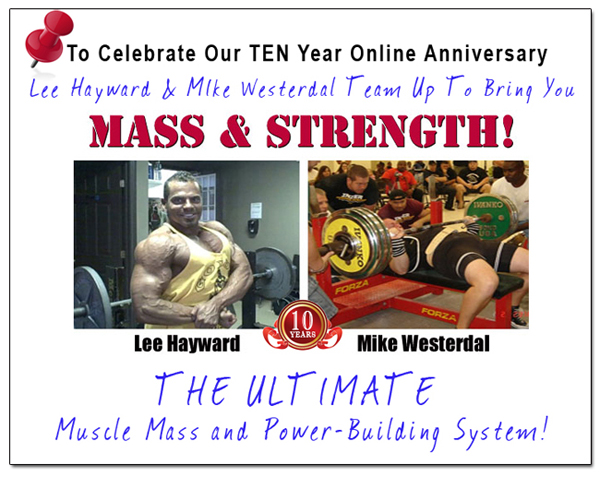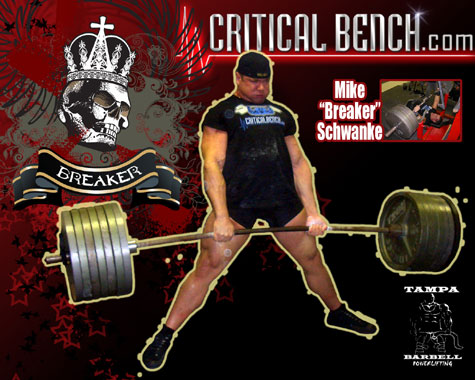Interviewed by Chris Wilson, Head Strength Coach

1. Has HUGE & FREAKY been replaced by a lean more classic physique? Is the sport actually returning to its roots from the Golden Era and a more SLEEK physique?
BEN TATAR: The culture has changed. In the past, there were many more freaks. Now there are competitions in multiple weight classes. Brandon Curry won this year’s Arnold at 217lbs!
Ronnie Coleman once weighed over 360lbs and competed on stage at over 300lbs at 2.8% body fat. Ronnie won the Arnold in 2001. The old pros were about 100lbs heavier than the heavyweight pros of today. There are no more 400+ pound bodybuilders anymore like Greg Kovacs. Kovacs was 420lbs in the off season. He competed at 330lbs on the Arnold stage back in 2004.
The Golden Era took place between the 1950s and the 1980s. Some noticeable differences when we compare the Golden Era to today:
- In 1950 we had 2.2 billion people in the world. Today we have 7.7 billion people. There are 3.5 times more people.
- During the Golden Era we didn’t have social media, weight training books, Critical Bench and various sources for information. We didn’t have huge fitness conventions.
- In the Golden Era there were a few bodybuilders who trained together at Gold’s without a fitness industry. Today supplements make millions of dollars each year and hardcore competitors train together all over the world.
- Back in the 80s the supplements tasted horrible, and now there are many supplements that also happen to taste great – more mass appeal!
- In the Golden Era lifters were doing odd lifts such as the pinch grip deadlift technique, sissy squats and donkey calf raises with people as resistance. Training has come a long way inside the more glamorous health & fitness centers.
Culture is just too different today to be compared to the Golden Era.
However, there are positive attributes from the Golden Era that remain. The gyms were all hardcore gyms instead of franchise gyms. They did more full body lifts and stuck to the basics. They weren’t polluted by generic information, and they did what really worked for their bodies. They really focused on the art of the physique and trained hard. I think Golden Era concepts are being used for some of the tougher physique competitors of today.
The Golden Era also inspired many modern-day strength athletes with their strength! Franco Columbo at 185lbs was deadlifting 750lbs and power cleaning over 400lbs! I don’t think the physique competitors would want to mess with that!
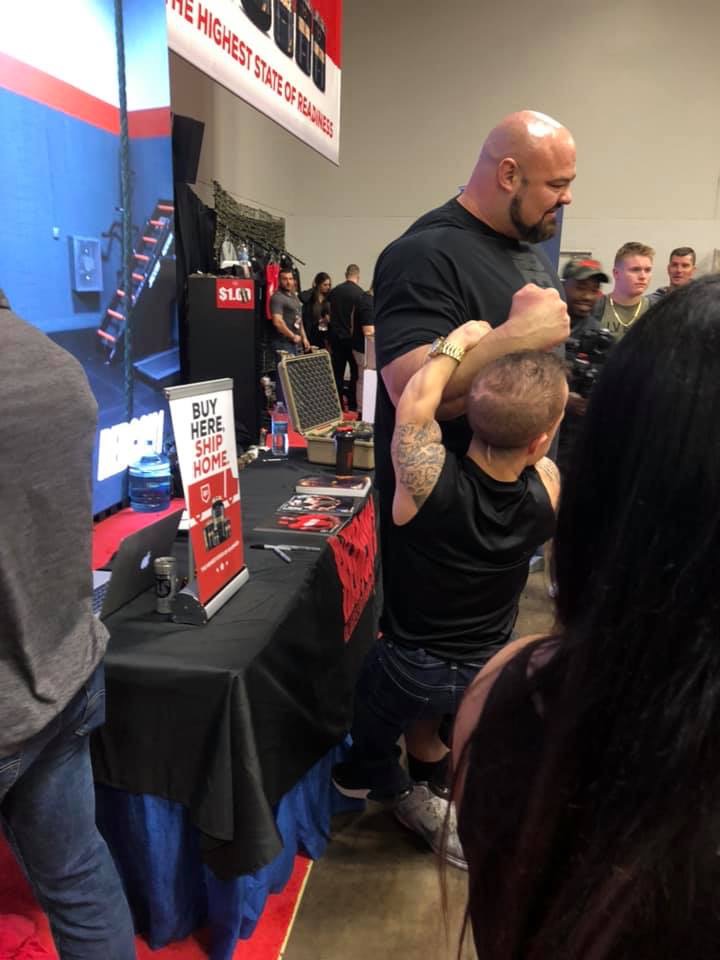
The Golden Age competitor was more like a cross between a physique competitor and a strength competitor. This means physique competitors aren’t going back to the golden age roots. Maybe this message will motivate someone out there to change this trend.
This year, I saw fewer former pro heavy weight bodybuilding Arnold champions. However, when it comes to the powerlifters and strongmen, we are constantly seeing records being broken. Some disabled lifters are having dreams come true. There are also many more opportunities for the female athletes and kids.
2. Name the TOP 5 Celebrities you saw at ASF 2019 and tell us how fans get to party or hang with them?
BEN TATAR: I saw the most celebrities at the “Make It Fit” charity event for Autism. This is Phil Heath’s event. The celebrities who attended were Phil Heath, Matt Flynn, Darron Lee and the Cleveland Indian Cheerleaders. There were lots of successful NFL players. There was a photo booth, and anyone who gives money to Autism and buys a ticket can party with them.


The other event is called the “Arnold Pop Culture”. Celebrities such as Arnold Schwarzenegger, Kai Greene, Brandon Curry, Larry Wheels and Mountain (Hafbor Julius Bjornsson) from the Game of Thrones, were in attendance. The event took place on Sunday morning.
The celebrities also hang at the Kid’s Expo. They had David Goggins, four-time Super Bowl Champion from the 75-79 Steelers, Rocky Bleir, Tim Kennedy, and UFC Hall of Famer Randy Couture.
3. Name your personal HIGHLIGHT of the event. Why was this experience so awesome? Give lots of details 
Ben Tatar: I came to the expo pretty injured this year. I had a cast on my foot. I was playing basketball, jumped really high and laterally landed on someone’s foot. At least I got the game winner, LOL. The big question was would my foot hold for the expo without giving out? I was on crutches from October to February and I decided to leave my crutches behind!

I got around the expo, picked models up and even set a record at a booth for holding a 235lbs weight with 1 arm the longest amount of time. I was feeling great about setting a record and how well my foot was holding. I went to the Optimum Nutrition booth and tried to do one legged squat’s fast on a virtual reality game, but didn’t score too well!
However, I was feeling good enough to even put in the effort. So, I think my personal highlight at this year’s Arnold was definitely how tough I was with my foot/ ankle injury. Outside of myself, I looked around and saw quite a few lifters on crutches and in wheel chairs. Many people overlook such people, but I found them inspiring. It goes to show, even if you’re injured, the Arnold is an event anyone can attend! Not just attend, but achieve greatness!
4. Overall, what events at this year’s ASF were BIG hits for the fans?? What event(s) bombed?
BEN TATAR: The strongman is the biggest hit for the fans. This is where world records are broken. There is always so much energy. The events are so gimmicky and interesting with maxes. It’s more popular than the ESPN World’s Strongest Man contest because the events are based more on brute strength.
The Mountain set a new world record in the Rogue Elephant bar by locking out 1,041lbs. He attempted 1,100lbs and just missed. The Wheel of Pain strongman event was very interesting to the masses. In powerlifting, Ray Williams set another squat record as he squatted 1,080lbs.
The most heartfelt moments for fans was when Miles Taylor who has Cerebral Palsy deadlifted 185lbs. The lifters with disabilities have incredible hearts and toughness.
For what events bombed? Well, there are over 80 events. There are even new events like foosball. Not every event can bring in big audiences. So some events don’t necessarily bomb, but aren’t being watched by big audiences. The Arnold is so big that events are scattered everywhere. I’m one of few who try to follow as many as possible, even if it means looking up information after the event happens.
5. How has the Arnold changed since you started attending? What got better and what got worse?
BEN TATAR: I think almost everything has changed since I started going. The events on the main stage are different. Thousands of the athletes, freaks, celebrities and models have come and gone. The way information is followed and communicated is also very different today.
Six things that have improved:
1) Today there are more competitions. The attendance is higher. Basically, everything has expanded, and there is more of something for everyone.

2) There are more booths, supplements and models. There are new extravaganzas like “Arnold pop culture.”
3) The world records are higher / bigger / more impressive than ever before.
4) There are more divisions for physique competitions. There are more competitions for female competitors and for people with disabilities.
5) Today we have the kids’ expo. Events are happening in more locations which also controls the crowd.
6) There is a stronger emphasis on health today.
Back in the 90s it was much smaller and the events were contained in Veterans Memorial. In 2006, the Arnold became the Arnold Sports Festival. However, so many exciting events have been added since then! Today the events are changing and more events are added every year. There are more events at today’s Arnold than there are at the Olympics!
Here are six things I miss from the old expos:
1) I liked the old Jason Dhir after Parties. Back then the celebrities and everyone from the booths were all at the same Saturday night parties. The Saturday night party stopped in 2013. (However, I love the Phil Heath ‘Make It Fit’ for Autism event on Friday Night. This event started in 2013 at the Arnold’s 25th anniversary and didn’t exist prior to 2013.)
2) Many people liked how the fitness industry was more of a magazine industry. Not everyone can be in magazines, but everyone can be on social media.
3) Today there are fewer freaks. It has less of the feel of being on another planet.
4) I miss casually running into big name celebrities who would just hang out in the lobby such as Bones Jones, Hulk Hogan, Ray Lewis and John Cena.
5) The Arnold had the WPO powerlifting competition on the main stage. It was a hardcore vibe.
6) I definitely miss some of the friends I made over the years who aren’t attending.
However, when something goes down, something else goes up. For example, today people can market the Arnold more on social media. Certain things aren’t better or worse, but just different. I think the Arnold does a good job each year of improving and expanding! What isn’t healthy or isn’t working goes out of style. The Arnold now appeals to a more diverse audience.
Lastly, Ben, you are an ASF guru, an expert….
PLEASE list your TOP 10 ASF experiences of this year and tell us ‘why’ they were great.
BEN TATAR: Top 10 experiences in no particular order:
*** I enjoyed eating dinner with Tiny Meeker the first and only man to ever bench press over 1,100lbs. It’s fun talking to someone who knows every bencher. Not many people are like that. Plus, he eats an insane amount.
*** I enjoyed the whole entire social experience of the 2019 Arnold.
*** I enjoyed making friends with leaders in the industry.
*** I really enjoyed the VPX models and the VPX energy. Everyone was in beast mode.
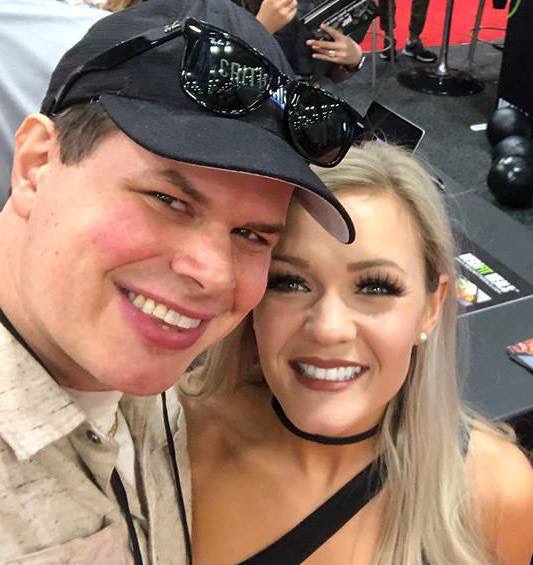
*** Rob Jones’ birthday dinner was great. It’s always fun to celebrate his birthday with the Under Construction crew.
*** The Phil Heath “Make it Fit,” event for Autism was fantastic. All the best hearted stars in the fitness world come together and make a difference.
*** I really enjoyed staying at the convention center. This is huge because I can bring stuff to my room throughout the day and it’s a time saver.
*** It’s always awesome seeing old friends and making new ones. Everyone is always so pumped.

***I was glad I was able to make it through the expo with a foot and ankle injury. Realizing it never held me back. I also loved overcoming adversity and setting a record.
***Miles deadlifts a new record with cerebral palsy.
*** I enjoyed the celebrities and going to the kids expo.
The Aura of the Arnold experience is always incredible! History is always being made in some awesome form. Lastly, I want to thank CriticalBench and Chris Wilson for the interview. I will be back for next year’s Arnold and I hope to see everyone there. There is no other place quite like it.
CLICK HERE for a FREE Copy of
ARNOLD: Living a Legacy of Strength
For More Pictures of BIG Ben Tatar, please visit our CriticalBench Fan Page, http://www.facebook.com/criticalbench
For the BEST YouTube Videos on the Planet, please visit our CriticalBench Channels, http://www.youtube.com/criticalbench
And our Amazing Critical Bench COMPOUND, http://www.youtube.com/gymexercises
And if you haven’t yet, start following us on Instagram @thecriticalbench and also on Pinterest, www.pinterest.com/thecriticalbench



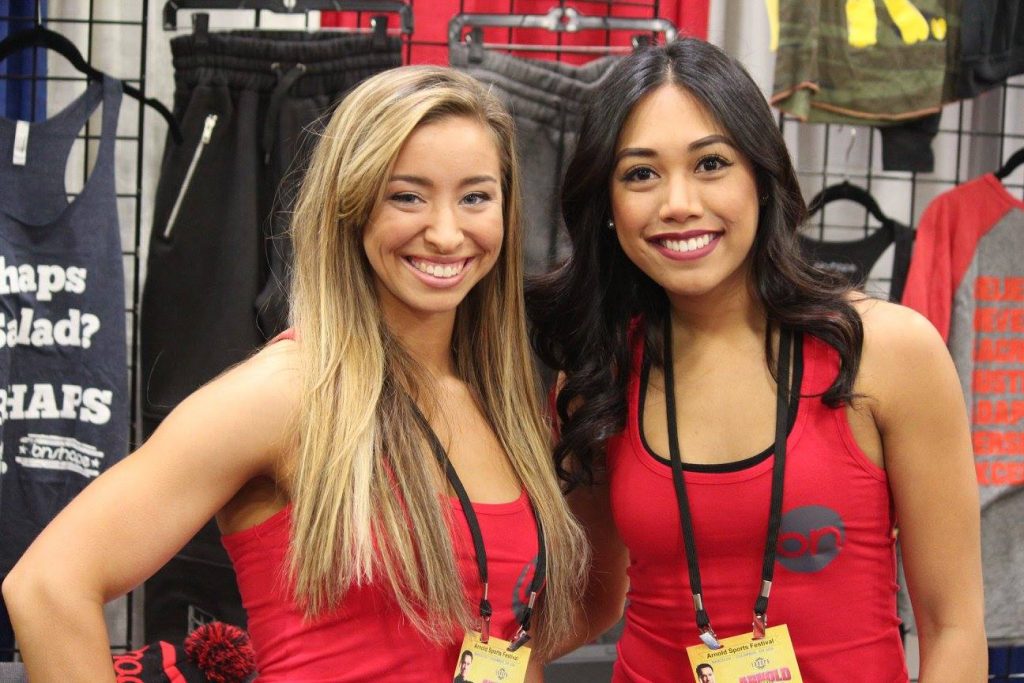
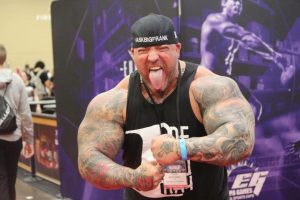
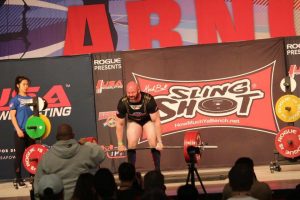
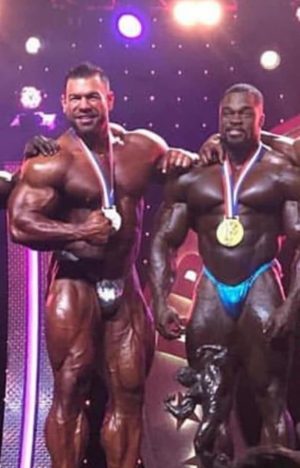

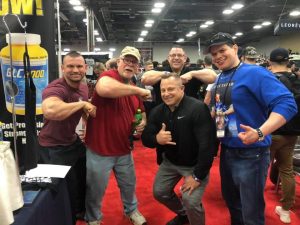
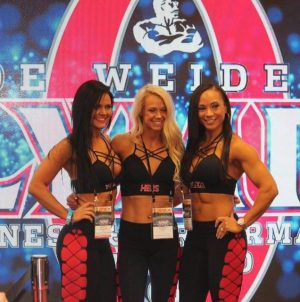
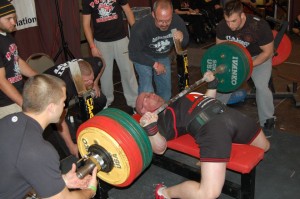 CB: Jake, tell us about yourself.
CB: Jake, tell us about yourself.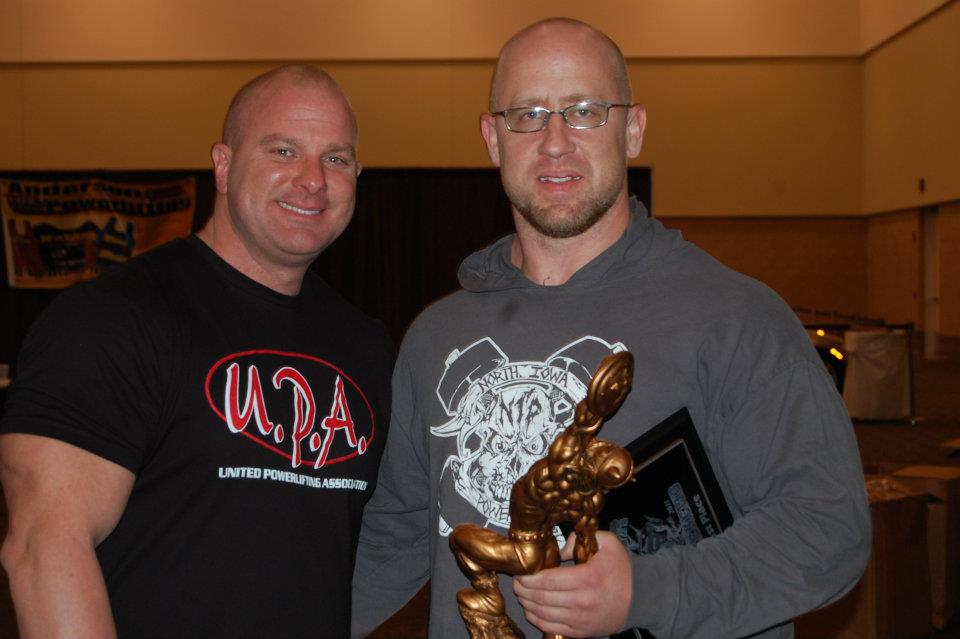 Bill Carpenter with Jake Prazak
Bill Carpenter with Jake Prazak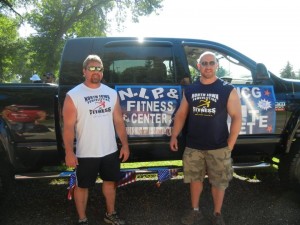 JP: I train at N.I.P. & Fitness Center. I own it with one other partner. It is a 5100 sq ft, brand new facility in Mason City, Ia. We have Powerlifting, Strongman, Dedicated Women’s circuit and lots of pin select and plate loaded equipment. We cater to everybody, no matter what your fitness goals are.
JP: I train at N.I.P. & Fitness Center. I own it with one other partner. It is a 5100 sq ft, brand new facility in Mason City, Ia. We have Powerlifting, Strongman, Dedicated Women’s circuit and lots of pin select and plate loaded equipment. We cater to everybody, no matter what your fitness goals are. 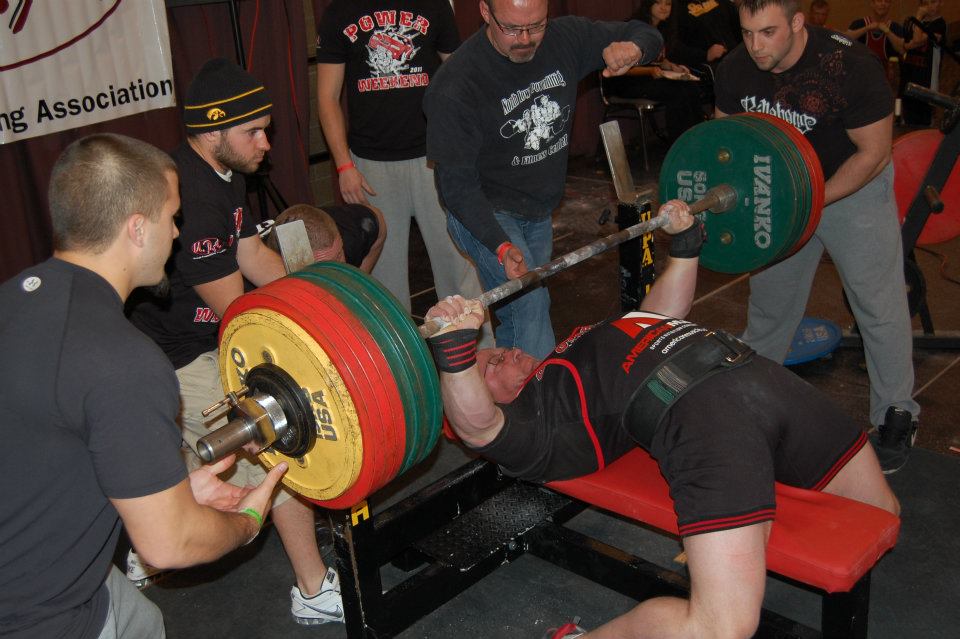
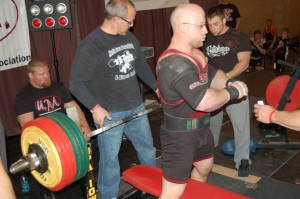 JP: They have obviously tried it…they just can’t handle multi-ply benching. Do you want to say you bench 400 raw or 600 equipped? Human nature in all of us says we want to say 600 equipped. Sounds way cooler! Raw and equipped are two completely different sports. I got really bored with raw and became addicted to handling as much weight as possible. I have the utmost respect for anybody who competes and will never diss anybody.
JP: They have obviously tried it…they just can’t handle multi-ply benching. Do you want to say you bench 400 raw or 600 equipped? Human nature in all of us says we want to say 600 equipped. Sounds way cooler! Raw and equipped are two completely different sports. I got really bored with raw and became addicted to handling as much weight as possible. I have the utmost respect for anybody who competes and will never diss anybody.
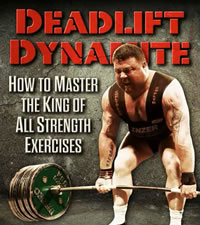
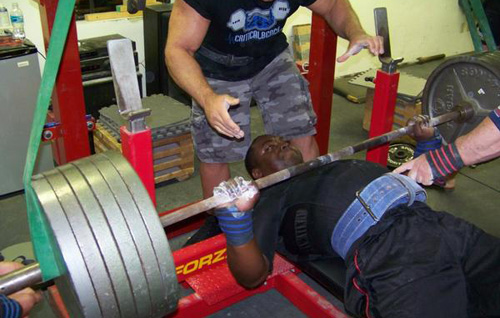
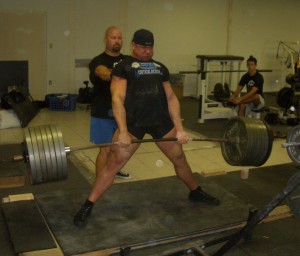 4. Visualization
4. Visualization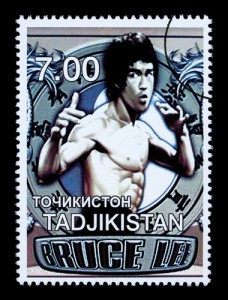 When you are focused, you will naturally take control and spend your time more wisely. Right now, do a quick exercise that will get you focused…
When you are focused, you will naturally take control and spend your time more wisely. Right now, do a quick exercise that will get you focused…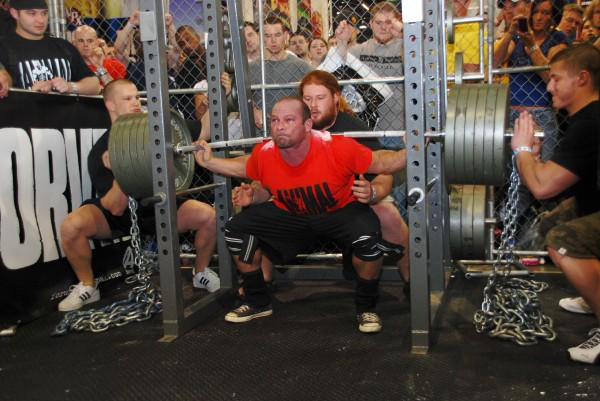
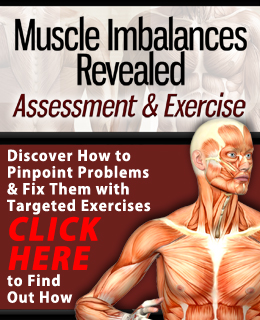
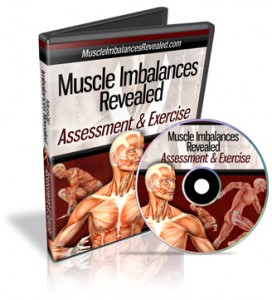
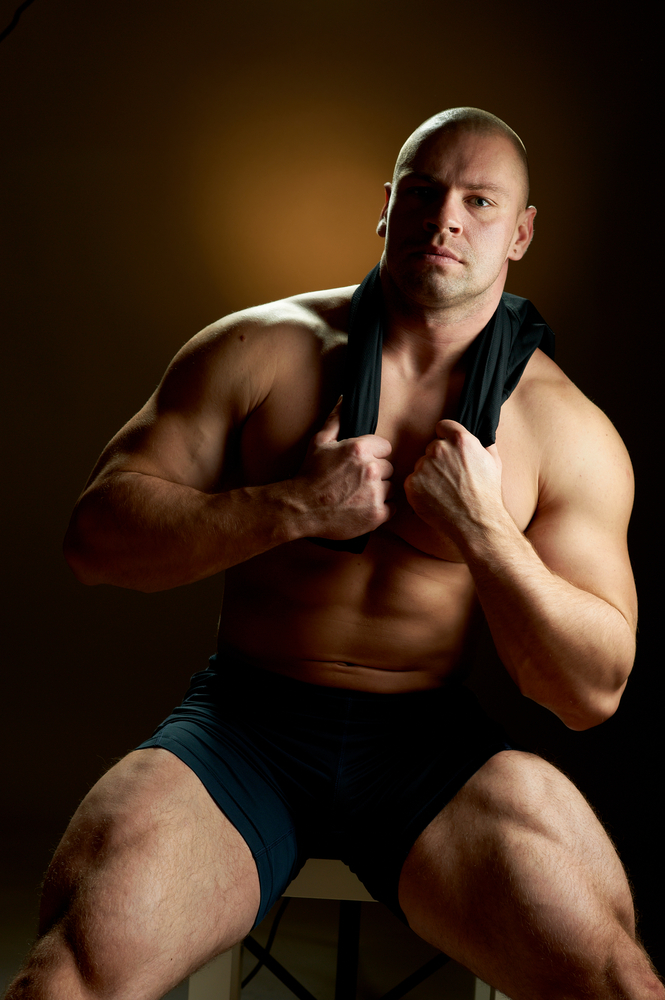 Andy Bolton is an English powerlifting and strongman legend. He was the first guy to deadlift one thousand pounds in a powerlifting competition. Andy won his first competition at the age of 21 and just kept going from there, never looking back. He is the current World Powerlifting Organization world record holder (2,806 pounds) and holds the WPO world records in squat (1,213 pounds) and deadlift (1,009 pounds). His best competition bench press is a whopping 755 pounds.
Andy Bolton is an English powerlifting and strongman legend. He was the first guy to deadlift one thousand pounds in a powerlifting competition. Andy won his first competition at the age of 21 and just kept going from there, never looking back. He is the current World Powerlifting Organization world record holder (2,806 pounds) and holds the WPO world records in squat (1,213 pounds) and deadlift (1,009 pounds). His best competition bench press is a whopping 755 pounds.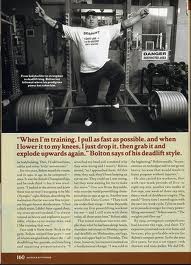 The next chapter provides an overview of the complete 16-week program. The program is designed for a four-day training schedule and is designed to be followed exactly as-is, without modification. The only modification allowed is a switch to a 3-day switch schedule.
The next chapter provides an overview of the complete 16-week program. The program is designed for a four-day training schedule and is designed to be followed exactly as-is, without modification. The only modification allowed is a switch to a 3-day switch schedule.
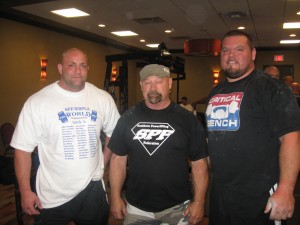 But it’s a claim I can back up with results.
But it’s a claim I can back up with results.

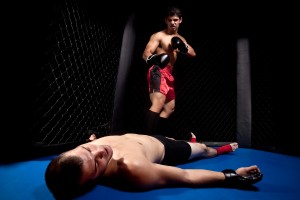 If you’re an athlete, you need to be explosive… unless of course you’re a marathon runner, in which case you can just slowly jog away from this article right now because this doesn’t apply to you.
If you’re an athlete, you need to be explosive… unless of course you’re a marathon runner, in which case you can just slowly jog away from this article right now because this doesn’t apply to you.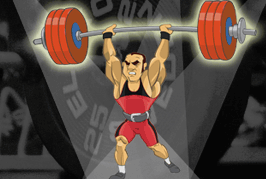
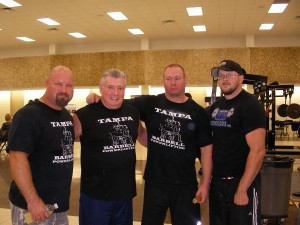 Ask most anyone that lifts weights what the three most critical lifts are and I can almost guarantee that he will say the bench press, the deadlift and the squat. Of the three, the squat is arguably the most important compound exercise you can perform because it not only works all of the major leg muscles but it strengthens the core and supports muscle growth throughout the body too.
Ask most anyone that lifts weights what the three most critical lifts are and I can almost guarantee that he will say the bench press, the deadlift and the squat. Of the three, the squat is arguably the most important compound exercise you can perform because it not only works all of the major leg muscles but it strengthens the core and supports muscle growth throughout the body too.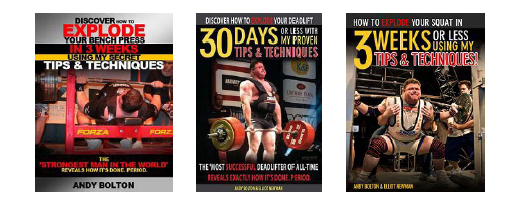











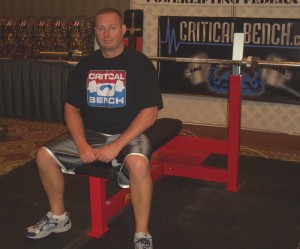 1) Hey Mike, welcome to this
1) Hey Mike, welcome to this 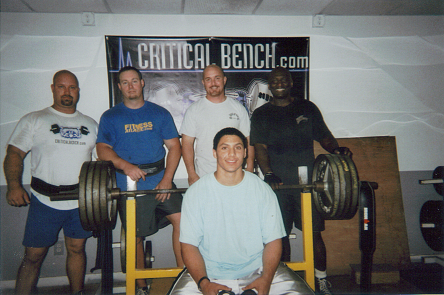
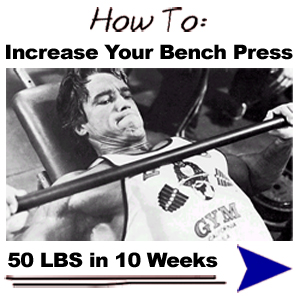
 Sean we may disagree here but I believe that when you lift heavy with compound movements you involve the most muscle groups, release more testosterone and growth hormone and produce bigger and stronger muscles. If you strongly believe that you need to 10 reps for muscular hypertrophy than do the heavy bench press workout first than move on to some assistance exercises using higher reps. This way you get the best of both worlds. Do you want to look strong? Or do you want to be strong? Or would you rather look and be strong? I’ll take the third.
Sean we may disagree here but I believe that when you lift heavy with compound movements you involve the most muscle groups, release more testosterone and growth hormone and produce bigger and stronger muscles. If you strongly believe that you need to 10 reps for muscular hypertrophy than do the heavy bench press workout first than move on to some assistance exercises using higher reps. This way you get the best of both worlds. Do you want to look strong? Or do you want to be strong? Or would you rather look and be strong? I’ll take the third.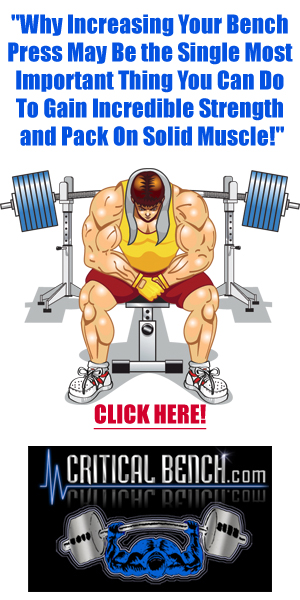
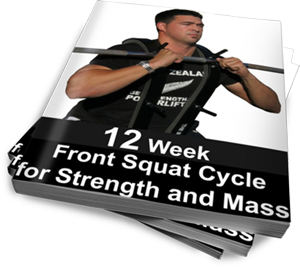
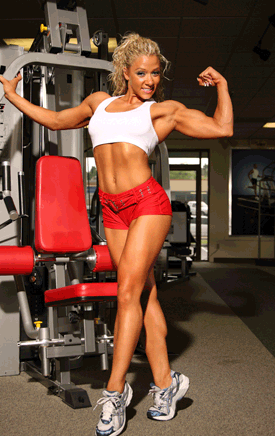 Beginners shouldn’t work up. Novice lifters should always stick with straight weight and use what’s known as a “sets across” approach. So if the program calls for five sets of five they should pick a weight they could do for maybe eight reps and do all five sets with that weight.
Beginners shouldn’t work up. Novice lifters should always stick with straight weight and use what’s known as a “sets across” approach. So if the program calls for five sets of five they should pick a weight they could do for maybe eight reps and do all five sets with that weight.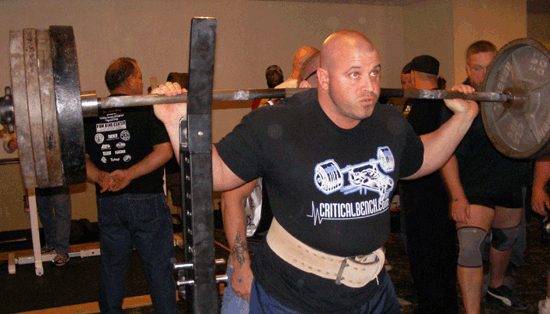

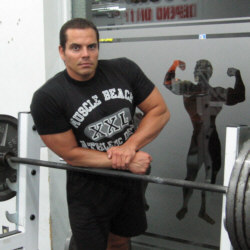 In fact, way back in the old days before the invention of bench presses with upright racks for holding the bar, guys would do a barbell pullover, lifting the bar from the floor to their chest, and then do their bench presses. But gradually over the years this exercise got pushed to the wayside and is hardly ever done by the average gym goer.
In fact, way back in the old days before the invention of bench presses with upright racks for holding the bar, guys would do a barbell pullover, lifting the bar from the floor to their chest, and then do their bench presses. But gradually over the years this exercise got pushed to the wayside and is hardly ever done by the average gym goer.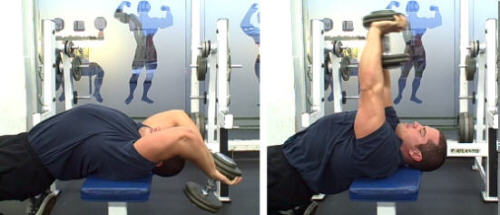
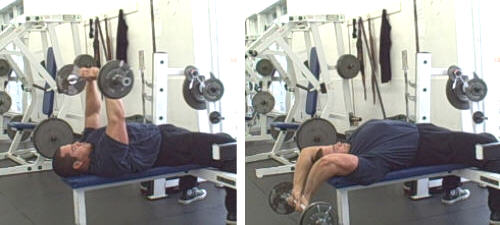
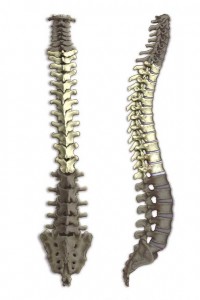
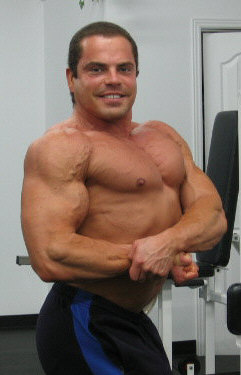 One of the most neglected types of training for the average gym goer is explosive strength. Almost everyone is taught to lift weights with a “slow and controlled movement”. However, in all sports athletes need to be explosive. When a baseball player swings a bat, when a soccer player kicks the ball, or when a boxer troughs a punch they need explosive strength.
One of the most neglected types of training for the average gym goer is explosive strength. Almost everyone is taught to lift weights with a “slow and controlled movement”. However, in all sports athletes need to be explosive. When a baseball player swings a bat, when a soccer player kicks the ball, or when a boxer troughs a punch they need explosive strength.
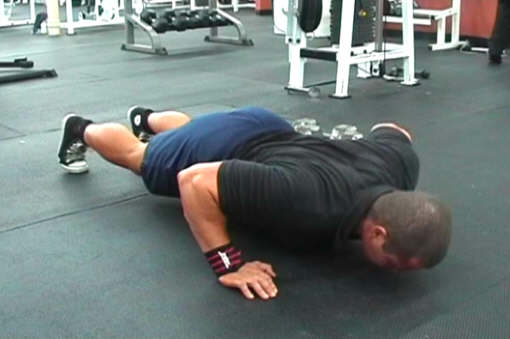
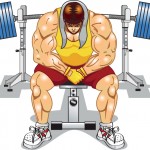 I have teamed up with my good friend Lee Hayward to celebrate the fact that we have both been in business now for 10 YEARS helping guys pack on muscle mass and strength time and time again.
I have teamed up with my good friend Lee Hayward to celebrate the fact that we have both been in business now for 10 YEARS helping guys pack on muscle mass and strength time and time again.